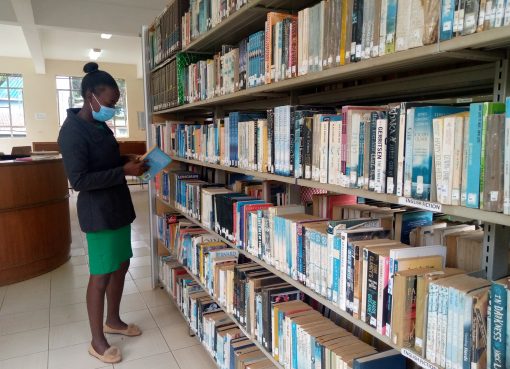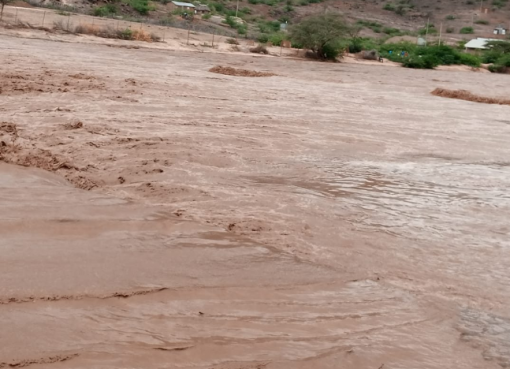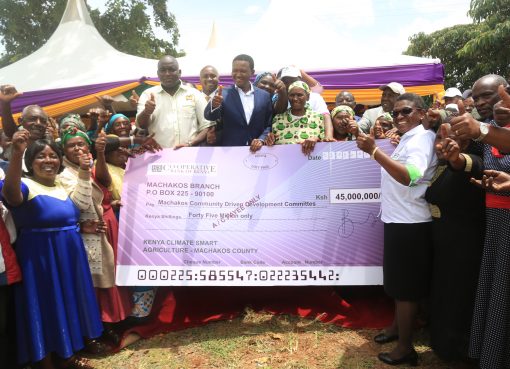Residents of Kighombo, Mkwachunyi, and Ikanga villages in Voi Sub County are pleading with the county government to fast track the rehabilitation of the dilapidated Kighombo dam as part of efforts to harvest rain water in the region.
The 111-year old dam was built by the East Africa Railways Corporation in 1912 to provide water for steam engines used in locomotives.
The dam used to serve thousands of people and livestock before it started drying up in the year 1963. Over the years, the dam was neglected and developed cracks that made it impossible to retain water.
Residents say the rehabilitation of the dam will boost water harvesting especially during the anticipated short rains for use when drought season comes.
Mr. Nathan Mwawaka, a farmer from Kunde village, says adverse effects of climate change are being felt in the rural villages with the majority of farmers losing their livestock and crops to drought. He says harvesting of water at the dam could alleviate the effects of drought when rains fail.
“Last year our cattle died. We have encountered losses in our farms due to lack of rain. Most of us depend on farming to earn a living and to take our children to school but it becomes difficult to do so after the effects of climate change. We need the dam to store water for irrigation,” said the farmer.
Kighombo Dam has a depth of thirty-three feet and has the capacity to hold 30 million gallons of water. The National Water Corporation which later took the dam in 1992 from East Africa Railway Corporation was unable to effectively maintain the facility leading to rapid deterioration of the walls and water pumping system.
When it was in use, the dam served over seven villages with water being piped to as far as Bachuma and Mackinnon Road areas at the boundary of Kwale and Taita-Taveta County.
The rehabilitation, the residents say, will boost efforts by the government to harvest water in the region. The degradation of Mbololo and Mwambirwa forest has also contributed to the death of the iconic dam as the streams that feed the dam dried up.
Lately, the region as is the case with many other parts of the country has been experiencing drought due to climate change. From widespread crop failure to death of livestock, the situation had made the food security situation in the region more precarious with thousands now having to depend on the government for food aid.
Ms. Linet Mnjala, a resident of Mwakiki village, says after the collapse of the dam, local residents are forced to walk long distances to fetch water from the remaining sources. However, vandalism of fences, pipes and taps have further contributed to the death of the dam.
“The dam was fenced to keep the water safe. There was even a guard during the day and night. People came from as far as Mkwachunyi to fetch water. It was a very vital resource for us,” says Ms. Mnjala.
Mr. Zaccheus Maghanga, an official with Water Resource User Association, says the county should conduct a feasibility study on the ability of the ancient dam to store storm drain waters which can then be pumped into deserving villages through solar powered pumps. Maghanga added that the facility can store additional water from Mzima springs to serve the parched villages in Mbololo location in Voi.
“A feasibility study can determine the ability of the dam to hold water and act as a reservoir when it rains,” he said.
According to the 2022/23 county budget, the Water, Environment and Sanitation docket has a development budget of Sh 69 million. This was after the County Assembly slashed the original budget by over Sh 129 million.
However, the docket has huge donor-funded programs including Sh 800 million Water and Sanitation Program funded by World Bank, Sh 15 million Mwaroko-Sinai bulk water program funded by Kenya Red Cross Society and Sh 25 million Kishenyi-Kishushe Water Project which is funded by Water Sector Trust Fund.
The County Executive Committee Member (CECM) for Water and Sanitation Mr. Granton Mwandawiro said the county was seeking partners to rehabilitate Kighombo Dam. He said that the money initially allocated for the project was deducted to pay the huge pending bills. He however expressed optimism of getting a development partner to carry out the rehabilitation project and improve the water situation in the region.
“We are actively seeking partners to implement some of these projects. The money proposed for some of our projects was reallocated to cater for the pending bills,” he said.
By Whitney Zighani




